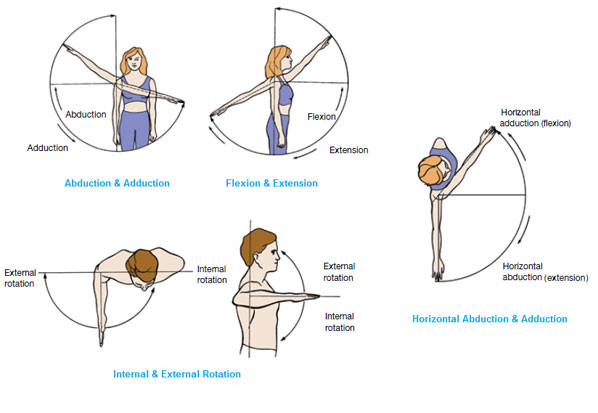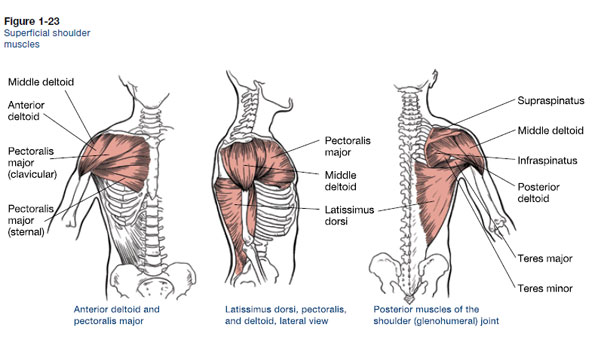The glenohumeral joint (commonly referred to as the shoulder joint) consists of the humerus bone attaching into the scapula. Many actions occur at this ball-and-socket joint. The shoulder abduction lets you lift your arms out to the side. Shoulder adduction lets you lower your arms back down by your sides.Shoulder flexion lets you lift your arms in front of you. Shoulder extension lets you lower your arms from lifted or lift your arms behind you. Internal shoulder rotation lets you from the anatomical position, twist your arms so that the knuckles of your hand face forward.This action at the shoulder can occur when your arm is in different positions (flexion, abduction, etc.)
External shoulder rotation lets you from the anatomical position, twist your arms so that the knuckles of your hand face backward. This action at the shoulder can occur when your arm is in different positions (flexion, abduction,etc.) Horizontal abduction; For the start position, lift your arms in front of you. The action occurs as you then move your arms out to the side. Horizontal adduction; For the start position, lift your arms out to the side. The actions occurs as you then move your arms in front of you.
Shoulder abduction= Deltoid – all fibers; Shoulder adduction= Pectoralis major and latissimus dorsi; Shoulder flexion= Pectoralis major, and anterior fibers of the deltoid; Shoulder extension= Latissimus dorsi, teres major (“little lat”); Internal shoulder rotation=Subscapularis Latissimus dorsi and pectoralis major also play a role in internal rotation; External shoulder rotation=Infraspinatus and teres minor; Horizontal abduction=Latissimus dorsi and posterior fibers of deltoid; Horizontal adduction=Pectoralis major and anterior fibers of deltoid.

